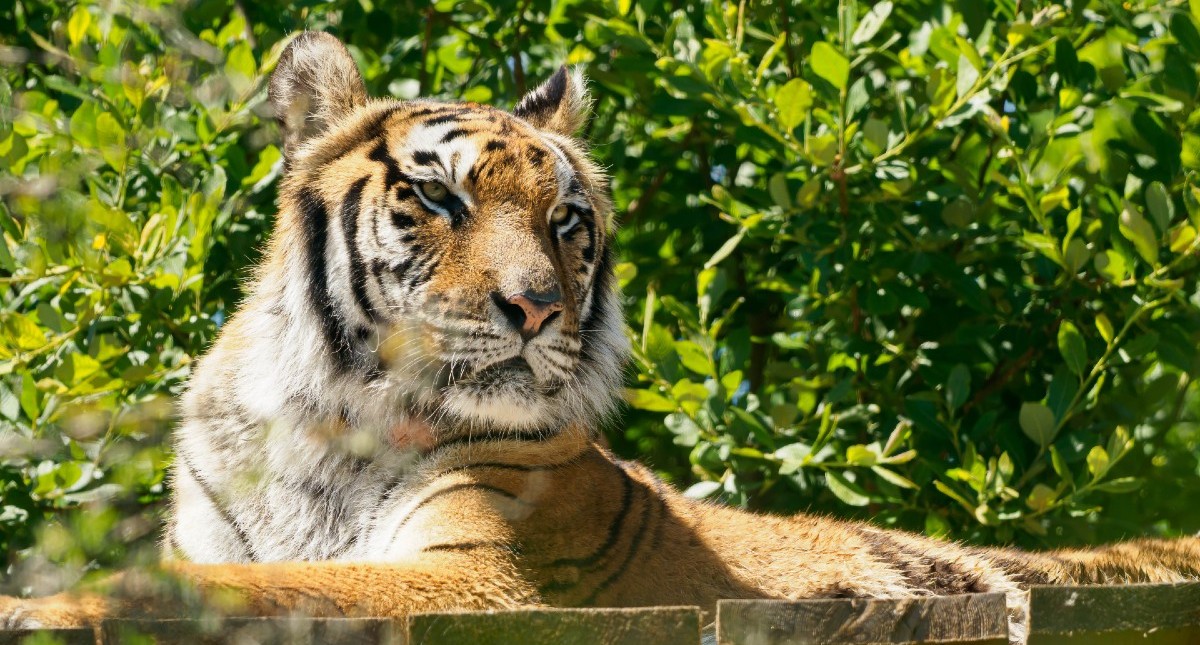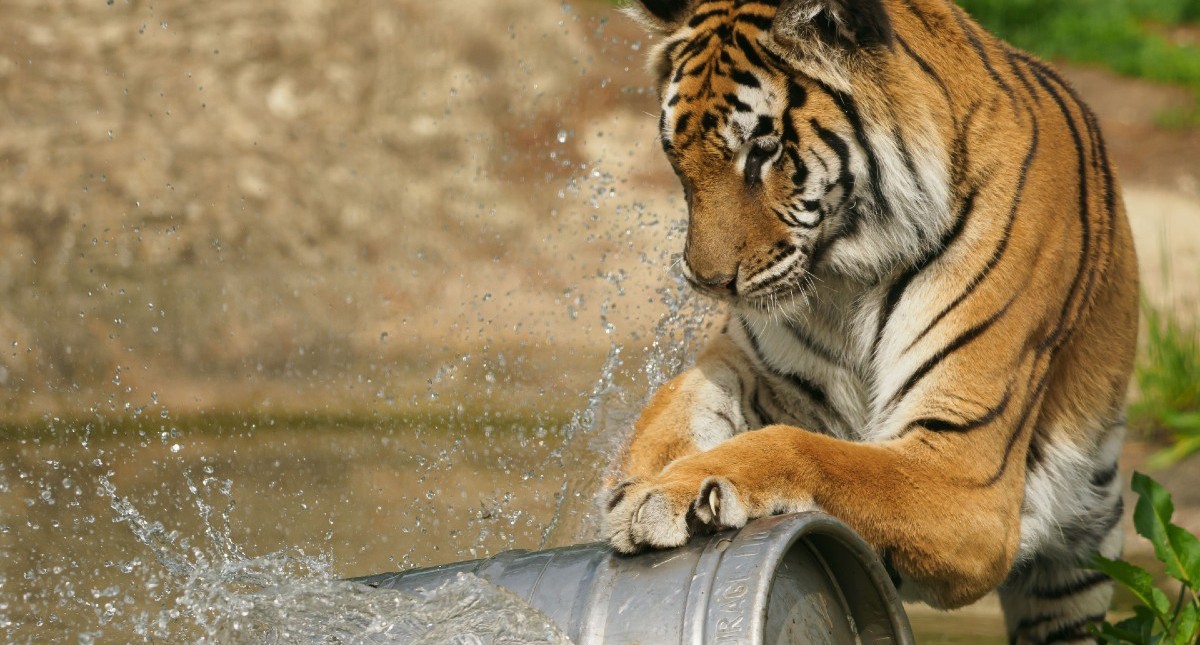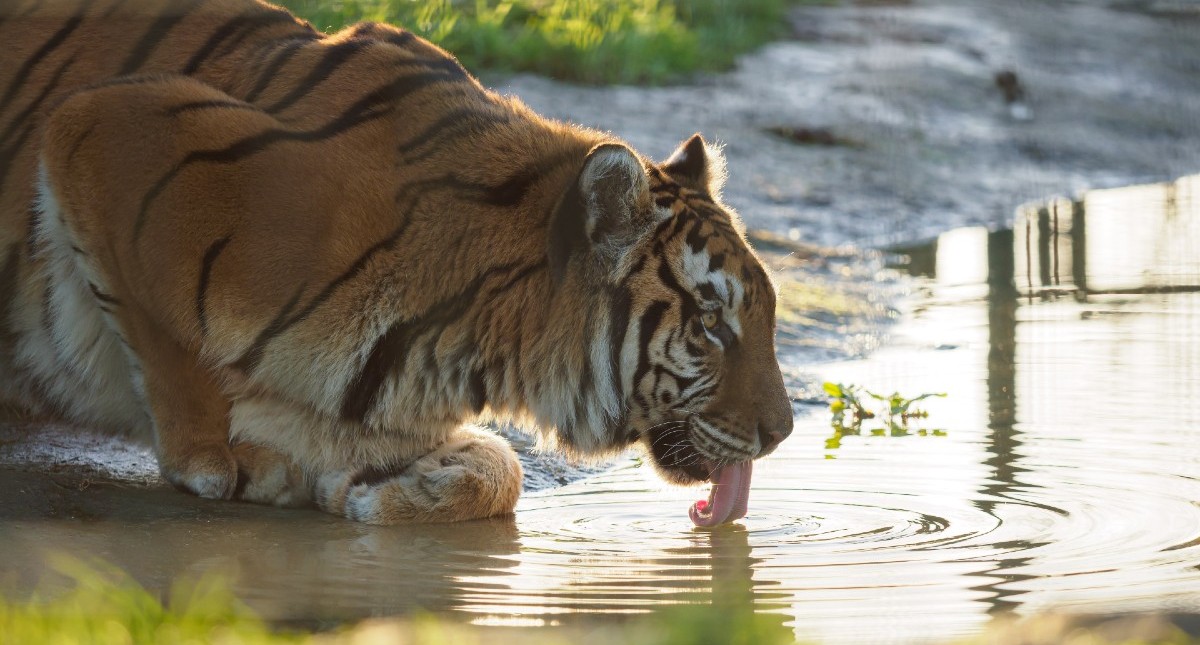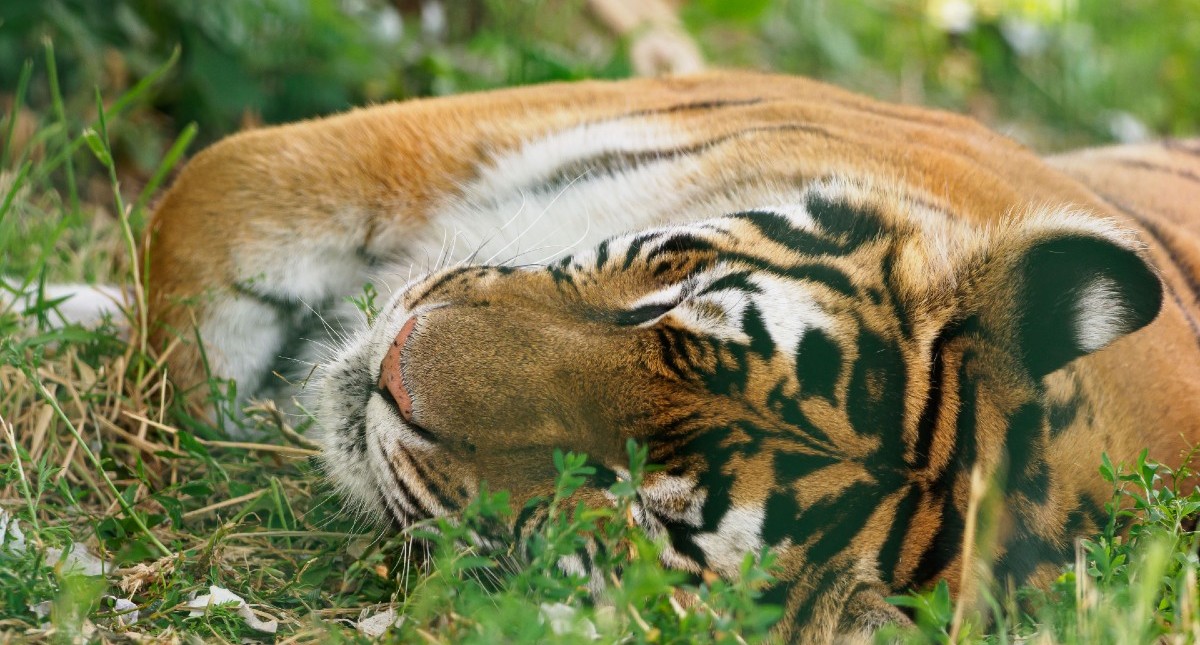The beautiful, awe-inspiring tiger is one of our planet’s most iconic animals.
#InternationalTigerDay (also known as Global Tiger Day) is celebrated every July, to raise awareness about this magnificent but endangered big cat.
Wild tiger numbers dropped by more than 95% since the beginning of the 20th century. Now, for the first time in conservation history, their numbers are on the increase. Since 2010, WWF have been working to help double the number of wild tigers to over 6,000 by 2022 – the Lunar Year of the Tiger.
We would like to invite you to get to know more about this amazing species, so we have teamed up with the Big Cat Team at the Wildheart Animal Sanctuary, Isle of Wight to find out more about this incredible animal.
Q1: How loud is a tiger’s roar?
A1: A tiger’s roar can be up to 114 decibels and can be heard up to 45 kilometres away! However, tigers are actually very quiet, they are solitary hunters and spend a lot of their time not making a lot of noise.
Q2: How much does a tiger eat in one day?
A2: On an average day our female tigers eat between 5 to 8 kilos of meat. However, over the course of the week it averages out to be approximately 20 kilos of meat. In the wild, tigers will eat on average 50 medium size deer a year, which works out to be a meal once a week.
Q3: How much exercise does a tiger need each day?
A3: Tigers are quite inactive, so in terms of their daily exercise in the wild, they will roam quite often for long distances to patrol their territory. Here at the Wildheart Animal Sanctuary, the tigers are given the opportunity to roam, but also play and exercise with short bursts of activity.
Q4: How big is a tiger territory in the wild?
A4: It varies from male to females. Female territories tend to be between 10 to 20 kilometres squared, but males will roam to mate meaning their territories can be up to 100 square kilometres.
Q5: Why do tigers like to swim?
A5: Tigers are very confident swimmers and use water for several reasons. Whether that be to relax, cool off, or as a hunting advantage by chasing their prey into water to disable them and slow them down.
Q6: Are tiger stripes unique?
A6: Yes! They are completely unique. Every tiger has a print like a human fingerprint, so no tiger has the same stripes.
Q7: How many subspecies of tiger are there?
A7: There are currently six subspecies of tiger that exist in the wild today, but there were nine. All remaining subspecies are either endangered or critically endangered.
Q8: Tell us more about the two tigers you have here at the trust…
A8: We have two tigresses that live here with us. Unfortunately, they are ex-circus tigers so did not have the best start to life.
Natasha is the youngest and most vibrant and isn’t shy by any stretch of the imagination. Natasha is affectionate and curious and likes to think she’s the boss! She really loves ‘stalking’ our visitors and, most recently, the two lion brothers in the enclosure just opposite her. ‘Zoppa’ is lame on her left front leg – indeed, the word ‘Zoppa’ translates as ‘lame’ or ‘limping’ in Italian. Visitors to the sanctuary show care and concern by alerting us to the issue …but rest assured, she is in very good hands. Her injury is a permanent disability but she has adapted to it and she lives a very good life. She is incredibly active and mobile, enjoying playing with the other tigers – in fact she is the first one out to play when the enrichment toys come out.
Q9: How do you keep your tigers stimulated at the Wildheart Animal Sanctuary?
A9: We have a variety of ways we enrich and stimulate the tigers here at the sanctuary. Enrichment is something that we use as a term to enrich the lives of the animals and that can be in the form of toys, or sensory experiences. We have some amazing members and volunteers that fundraise for us to buy incredible tiger toys, which gives the tigers a chance to play and bring out their natural behaviours. We also use smells and feed provision in ways that challenge and excite them. It is all about encouraging them to exercise, rest, play and use their natural senses.
The Wildheart Trust is a registered charity which is dedicated to realising its global ambitions. These are principally to make a meaningful impact on the health of the natural world while actively improving the well-being of animals in human care. The Trust runs the Wildheart Animal Sanctuary and provides governance for its conservation aims.
You can find out more about the Wildheart Animal Sanctuary on their website.
Photo credits: Chris Boyce.



 to add an item to your Itinerary basket.
to add an item to your Itinerary basket.










.png)




